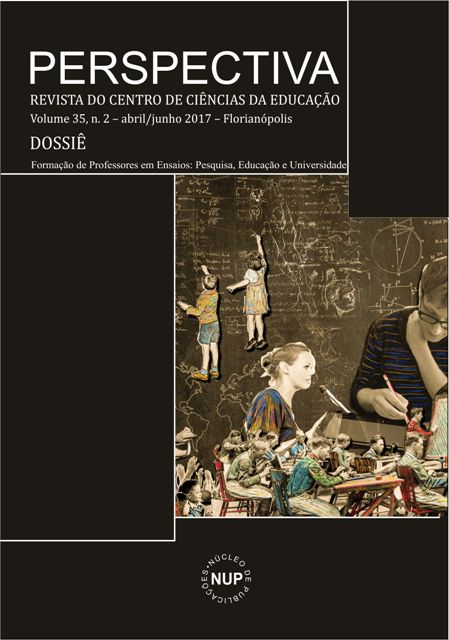Crenças de autoeficácia docente de pós-graduandos em engenharia: um estudo exploratório
DOI:
https://doi.org/10.5007/2175-795X.2017v35n2p615Resumo
O objetivo deste estudo foi mensurar as crenças de autoeficácia para o ensino de estudantes de pós-graduação das Engenharias, em instituições públicas localizadas no Sul e Sudeste do Brasil, bem como relacionar essas crenças com características pessoais e acadêmicas dos participantes. Especificamente, objetivou identificar quais dessas características poderiam ser associadas às crenças de autoeficácia para o ensino. 340 estudantes de pós-graduação das Engenharias responderam a um questionário sociodemográfico e à escala de autoeficácia do professor. Verificou-se que as crenças de autoeficácia para o ensino foram moderadas-altas, com pontuações mais altas para a dimensão ligada à mobilização dos alunos e mediação do processo de ensino, considerando uma pontuação média de 4.46 em uma escala de 6 pontos. Gênero, experiência de ensino, intenção de se tornar professor e senso de preparação foram as variáveis com forte associação às crenças de autoeficácia para o ensino. Implicações sobre a criação de oportunidades para o ensino durante o curso de pós-graduação foram consideradas.
Downloads
Publicado
Como Citar
Edição
Seção
Licença
Esta revista proporciona acesso público a todo seu conteúdo, seguindo o princípio de que tornar gratuito o acesso a pesquisas gera um maior intercâmbio global de conhecimento. Tal acesso está associado a um crescimento da leitura e citação do trabalho de um autor. Para maiores informações sobre esta abordagem, visite Public Knowledge Project, projeto que desenvolveu este sistema para melhorar a qualidade acadêmica e pública da pesquisa, distribuindo o Open Journal Sistem (OJS) assim como outros software de apoio ao sistema de publicação de acesso público a fontes acadêmicas. Os nomes e endereços de e-mail neste site serão usados exclusivamente para os propósitos da revista, não estando disponíveis para outros fins.
A Perspectiva permite que os autores retenham os direitos autorais sem restrições bem como os direitos de publicação. Caso o texto venha a ser publicado posteriormente em outro veículo, solicita-se aos autores informar que o mesmo foi originalmente publicado como artigo na revista Perspectiva, bem como citar as referências bibliográficas completas dessa publicação.



